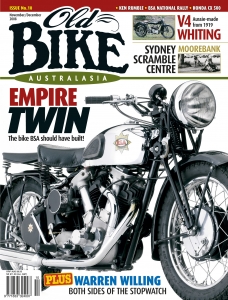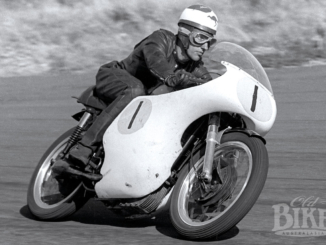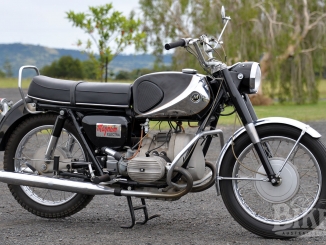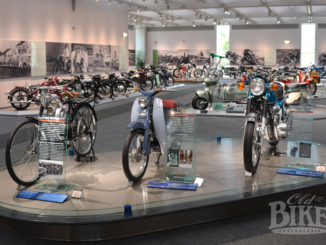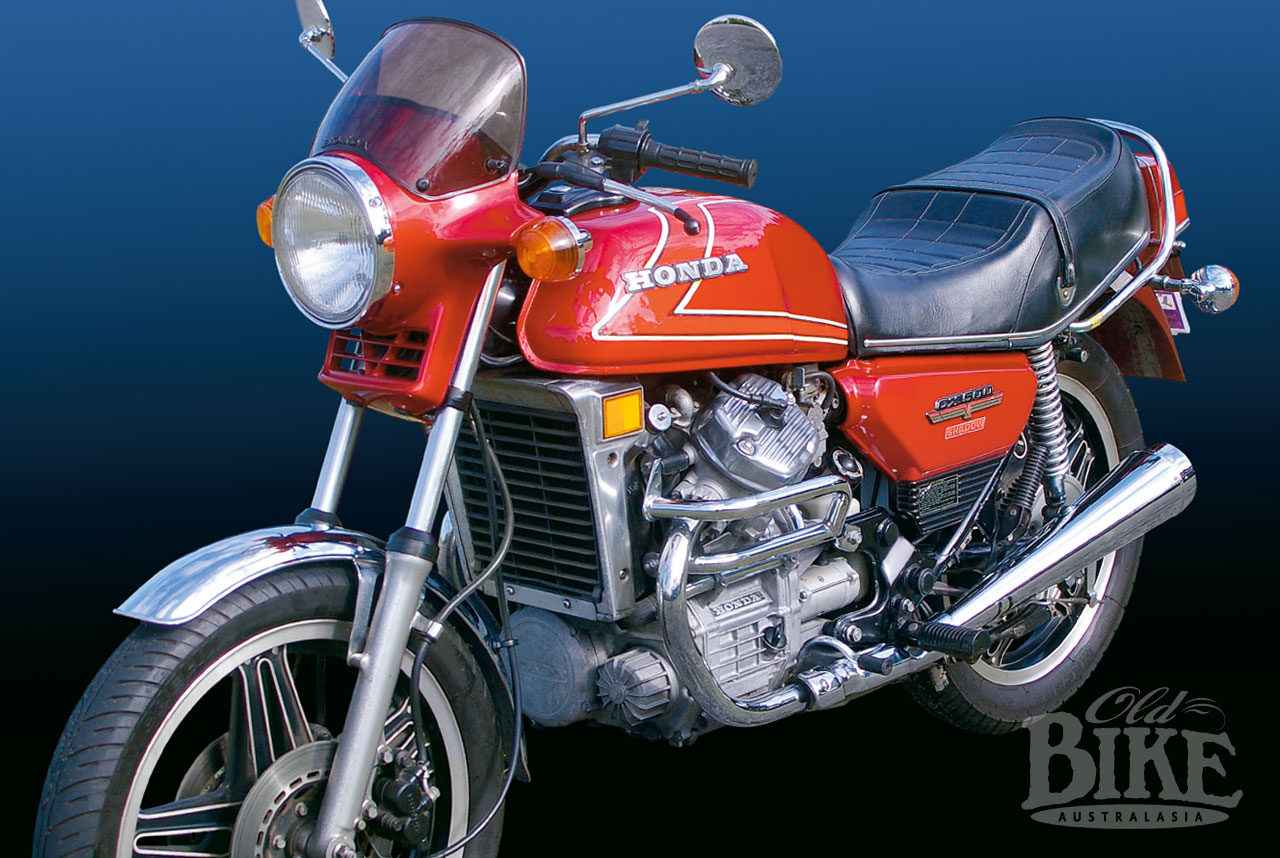
40 years after its launch, Derek Pickard retraces the career of Honda’s most unusual motorcycle – th eHonda CX500 – and explains why such an innovative design was ditched after a brief but successful career.
Story & photos: Derek Pickard
It was just another hot and sunny day in over-crowded Los Angeles when I jumped onto some forgettable test bike and rode into the city for a Honda function. It was early spring 1978 and after nearly ten years of working as a test rider for motorcycle magazines everything was getting very ordinary and I was ready to move on and find another way of earning a quid.
The invite said the motorcycle press was going to a new model preview, nothing more and the editor of the magazine I worked for insisted I attend. All that the journos were expecting as we gathered in the conference room was another version of a dirt bike as Honda was at that time flat out trying to make up ground on Yamaha’s all-conquering off-road range. But what we saw surely knocked us all out. We were all absolutely gob-smacked. Only a couple of months after knocking us over with their fantastic 1000 six, here was something totally different. Lickedy-split Honda had done it again.

Suddenly from nowhere the industry leader had flexed its massive resources and come up with an absolutely all-new bike that borrowed nothing from anyone, no parts from elsewhere in its range and totally broke new ground. Here was a very solid-looking 500 v-twin with shaft drive and pushrods. Incredible.
As Guzzi had announced a lightweight version of its new v-twin a couple of months before, much talk surrounded the possibility of a growing market for middle-weight tourers, but no one doubted that Honda’s massive marketing muscle and huge dealer numbers would ensure the CX500s success.
Test riding later revealed it to be a bike which though heavy for a 500 was okay for a 50bhp tourer, loved to rev and any torque reaction was next to zero. It did most things a tourer should do and everyone liked what they rode. Checking with what other testers reported around the world confirmed the bike was well received. So it was over to the public to buy or reject.
And as everyone knows, the CX500 became a top seller in no time. Everyone liked what they saw and demo rides confirmed how sweet the new bike was. Dealers did fantastic business and Honda had got it right.
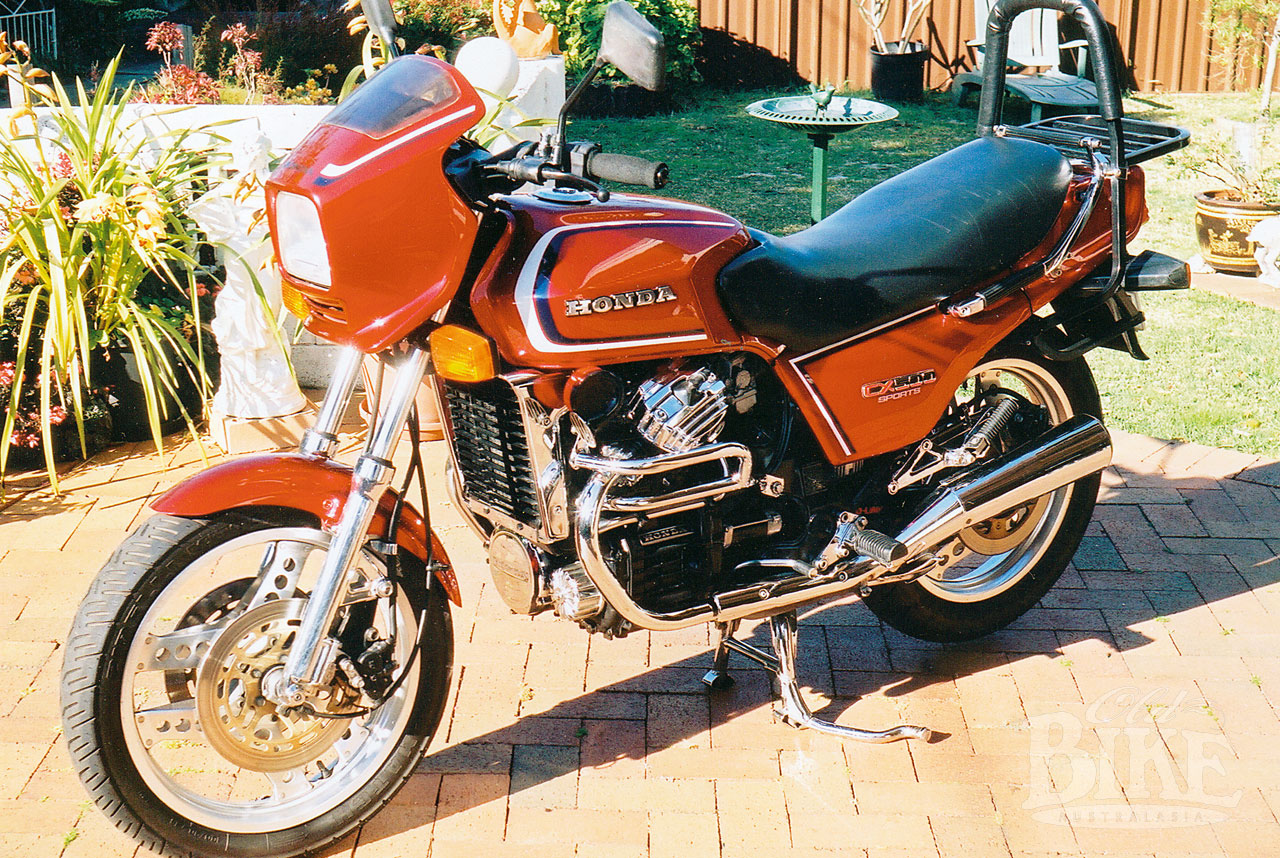
The CX500 was a hit everywhere. Americans used them in the cities and highways, Germans on their autobahns and the Brits even fell in love with them for the hard working London despatch riders.
Honda’s incredible Research & Development resources had come up with a layout boasted many innovative features: v-twin with pushrods and high revs, water cooling, side stick gearshift, shaft drive, engine as a lower frame member, etc. But even the Japanese giant had made a mistake and we soon heard a recall was ordered to fix a faulty cam chain arrangement. This was pushed through as quickly as possible with the dealers’ workshops confirming the work by making 3 marks next to the engine number.
Incredibly, nothing else was reported as going wrong. Riders simply opened the throttle and revved the bike for years.
Upgrades followed which predictably saw the introduction of a US-style cruiser, double discs up front and even an expensive turbo to suit the fashion of the time. But nothing much until the announcement of what everyone was really waiting for – a bigger CX. And as soon as the 650 came it went. Honda had cancelled the only big capacity version within the first year of production. Obviously sales had flopped with no explanation of why.
The innovative transverse v-twin with its high revs and shaft drive became history. We never got to see the much talked about long stroke 750 nor anything else CX-related and Honda totally forgot all about the layout. What Guzzi had started, it now was given back again. And all the many advantages of the excellent transverse v-twin shaft drive layout slumped back into low volume Euro production.
CX500 HISTORY: FIVE FANTASTIC YEARS
The first models were exported throughout the world in 1978 and that model became known for its single front disc and thin forks. But at least that disc was all of 270mm diameter and the pad area was plenty big so the stopping was fine. The Australian price was just over $2200.
Once the dealers had worked their way through fixing the camchain tensioner, the new Honda carved out a great reputation for doing exactly what it was designed for – easy touring and commuting. The world over, this bike was a hit.
Among the many oddball stories of how well this machine became accepted was among the London despatch riders. In only a few short years, the huge fleet of hard riding city thrashers dumped their previously popular el-cheapo 175-250 Jap trail bikes for CX500s. Although the weight proved a struggle at times they all loved the durable and dependable v-twin which kept going and going and going.
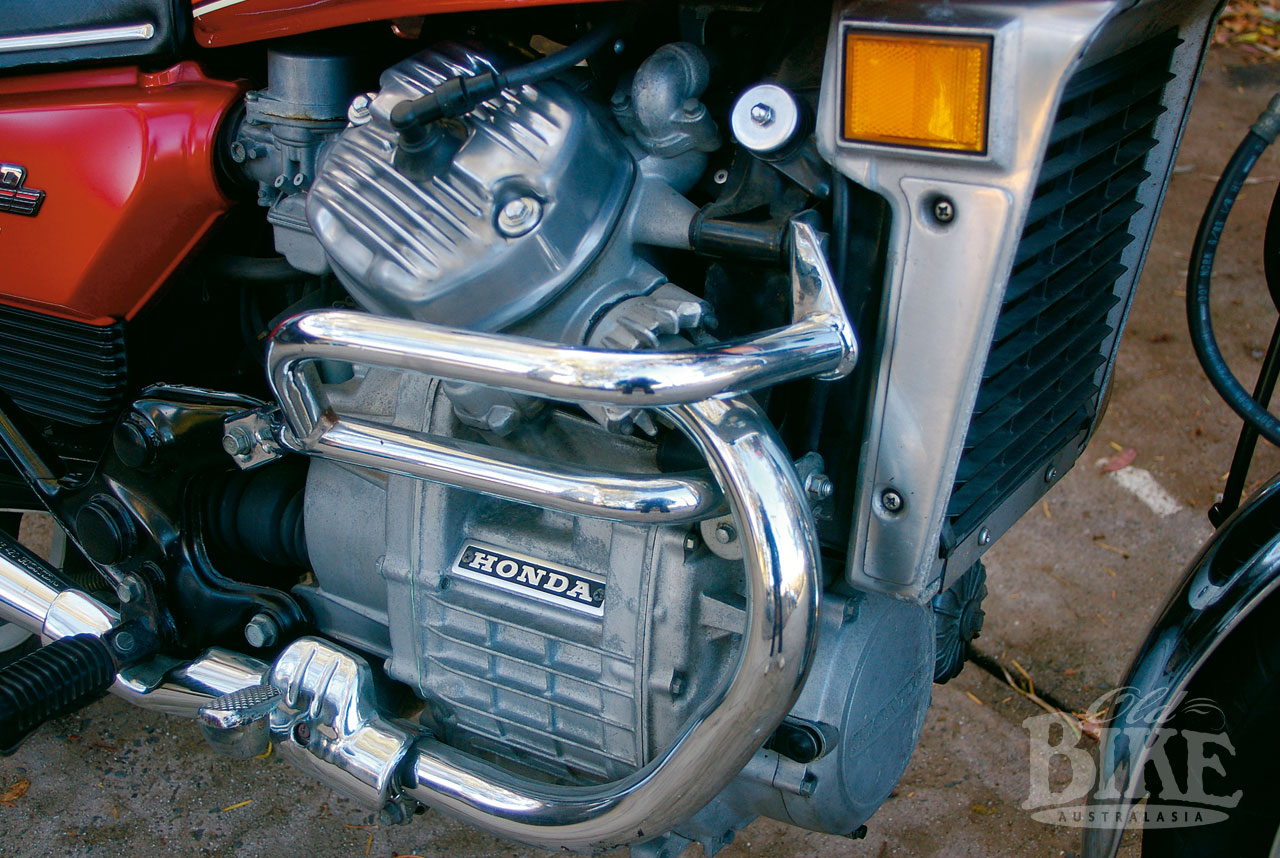
A couple of years after its introduction, in 1980, Honda fitted the front end with twin discs. Although this was seen as a good move, in reality they didn’t improve stopping by too much because they were only 240mm diameter and only marginally better than the big single disc. But there were two other additional mods, the noticeable one was the adding of a small screen to the front and the other was rerouting the crankcase venting to the air box.
And while all this was going on the popular bike was joined in the range by the Custom Cruiser with its taller bars, smaller tank and small rear wheel. Other changes included different instruments and headlight. A very American looking bike..
The success of the bike continued and the CX production line in Japan continued flat at 24-7 to keep up with global demand.
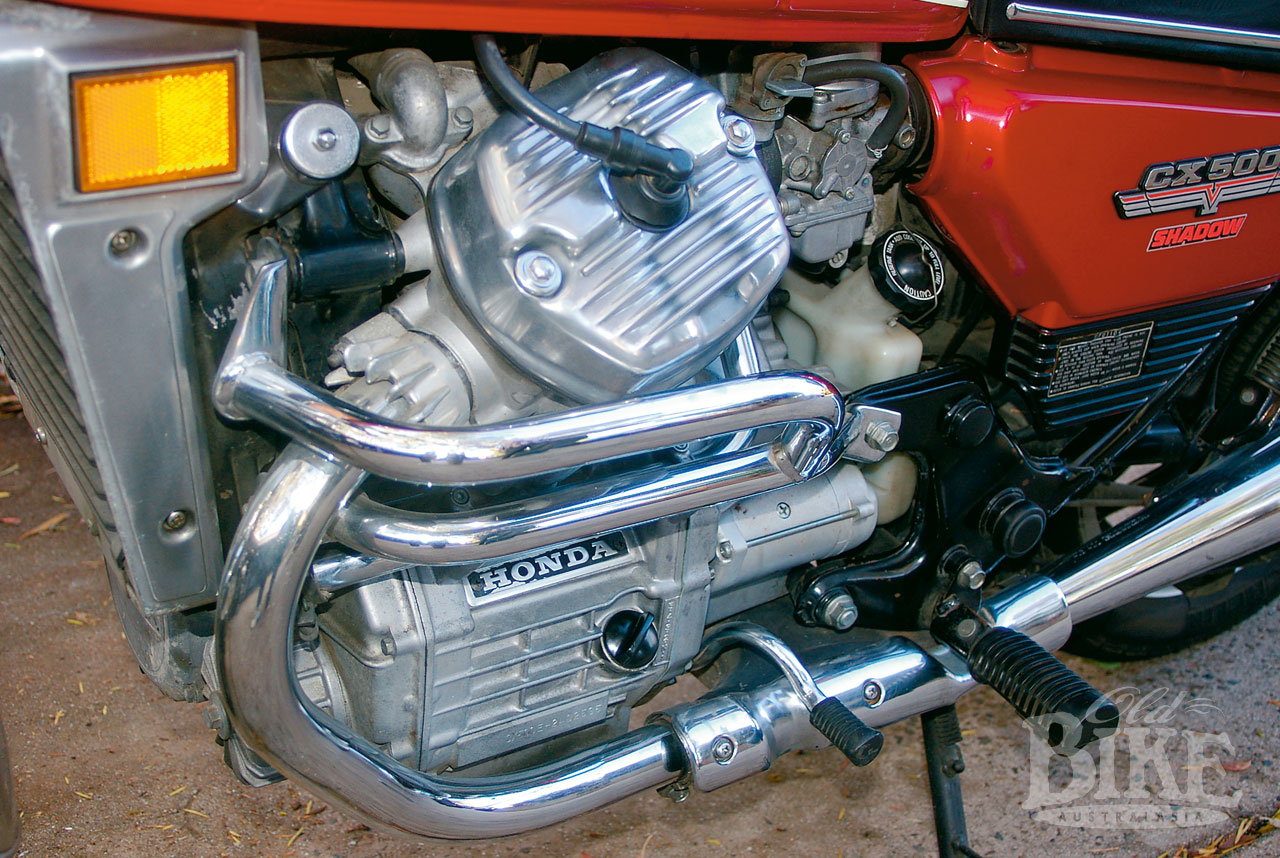
Another couple of years passed before the Japanese giant further improved its top selling 500. This time, in 1982, they released what many believe to be the best version, the Sport. The new model was equipped with thicker fork tubes (from 33 to 37mm diameter) and twin piston callipers. Also, the cam chain tensioner was redesigned to be automatic in operation.
And when no one expected it, came the announcement of the sensational new Turbo bike. This was a completely re-engineered dead serious CX500 with even a big fairing up front with the Turbo name so no one could possibly mistake the model. Unfortunately the price and complexity were too much and the bike was quietly dropped after only a year in production.
Then in 1983 out came what a lot of people had been waiting for – a bigger CX. And this new model was enlarged to 650 but equally short in stroke. And with those extra cubes came extra weight and extra length. The new big bike was also a new long and hefty thing. But at least it had the then new monoshock rear end to satisfy the growing number of buyers who thought two rear shocks had to be worse than one. It didn’t sell. The downturn was huge.
Honda quietly dropped the CX500 from production and replaced it with the very strange VT500 later that year which had the engine turned around to be in-line with the frame. But at least the new engine was lightly longer in the stroke so the flexibility on the road was good.
Slam bam, the market said no to both new models. Hardly anyone bought the CX650 or the VT500 so both were suddenly dropped. The CX was now part of history.
WHY IT HAD TO END
The Japanese factories are hard-wired to believe everything they made has to be replaced as soon as possible and the millions spent in R&D always supplies future models. Unfortunately the CX500 became a victim of this culture.
The v-twin had been around for a long time by Japanese standards and although the great layout had developed a massive following it was given the flick by a huge factory that could afford to move on. Honda wanted to push its then-new V4 engines which had started to roll out of the doors from 400 to 1000cc and nothing was to get in their way, not buyer preference, tradition, niche markets, nothing. Simple as that.
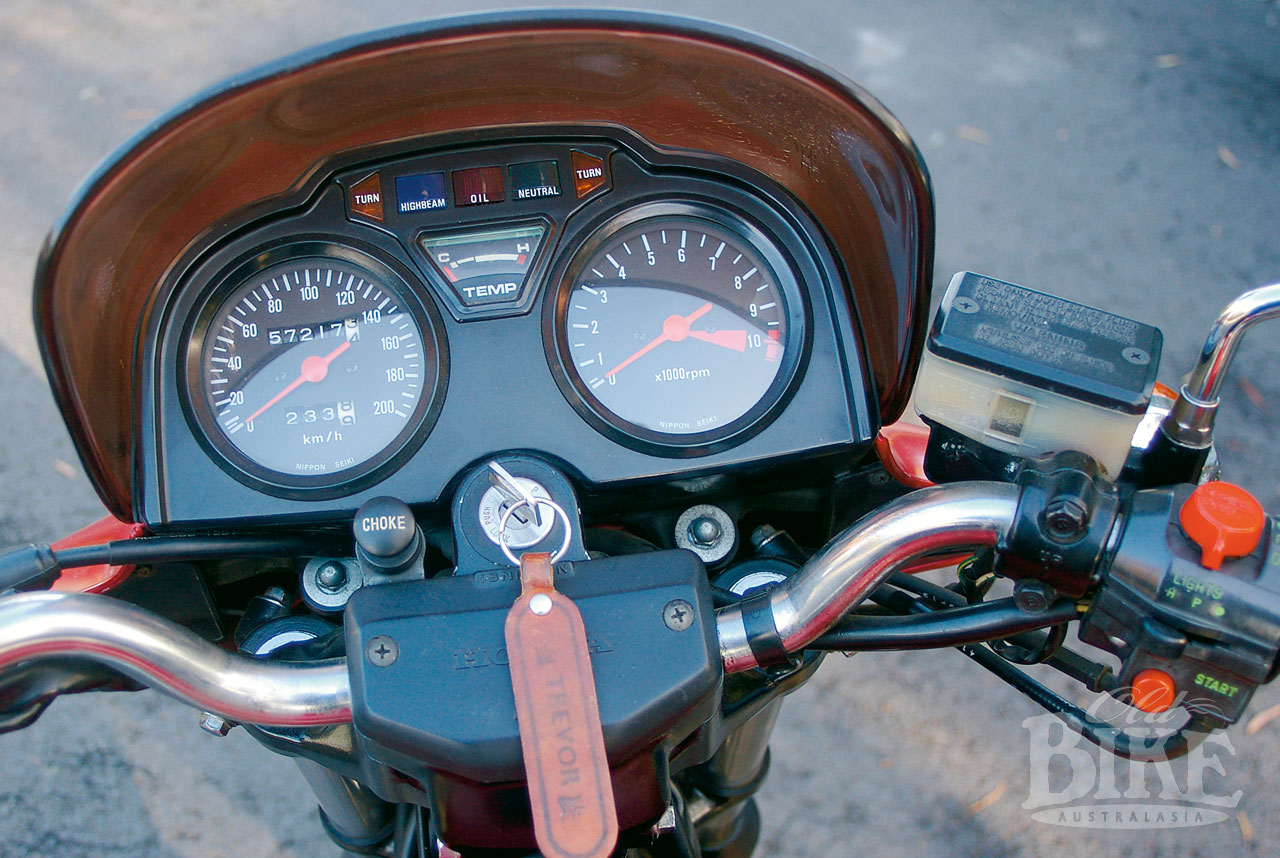
UNIQUELY UNIQUE
The huge advantage the CX500 had over everything else in its era was that it was unique, nothing came close. Some claimed the Guzzi was similar but they were wrong as the CX had a much shorter stroke, 4 valve rotated heads, narrow 80 degree angle vee, water cooling and the kind of long term durability that only Honda could produce.
The incredible engine just hung there in the frame with only the radiator to partially get in the way of everyone having a good long look. The motor was all polished and lacquered. Real in your face stuff. Very impressive. Everyone loved the looks of this great bike.
But the big differences didn’t stop with what you could see. Honda had done its big R&D very thoroughly and among the real changes from a simple layout was the way it had redefined the way an in-line v-twin should work by counter rotating the transmission to the frontal clutch and then putting the drive back to the gearbox. This minimised in-line torque reaction to a level of sod-all, no more. Very clever.
There were heaps of detail changes like the way the barrels were now part of the crankcase in true car style.
Also, in rotating the heads thru 22 degrees they managed to position the carb really close together to make a compact layout where they didn’t hit the rider’s knees. And just for the record, this pivoted the part of the raised piston top into the combustion chamber and so resulted in a unique piston layout where the centre of the valve cutaways was not in alignment with the gudgeon pin. “That’s no big deal” you might say….but it was since it prevented any other piston from being adapted to make a big bore version. Bummer.
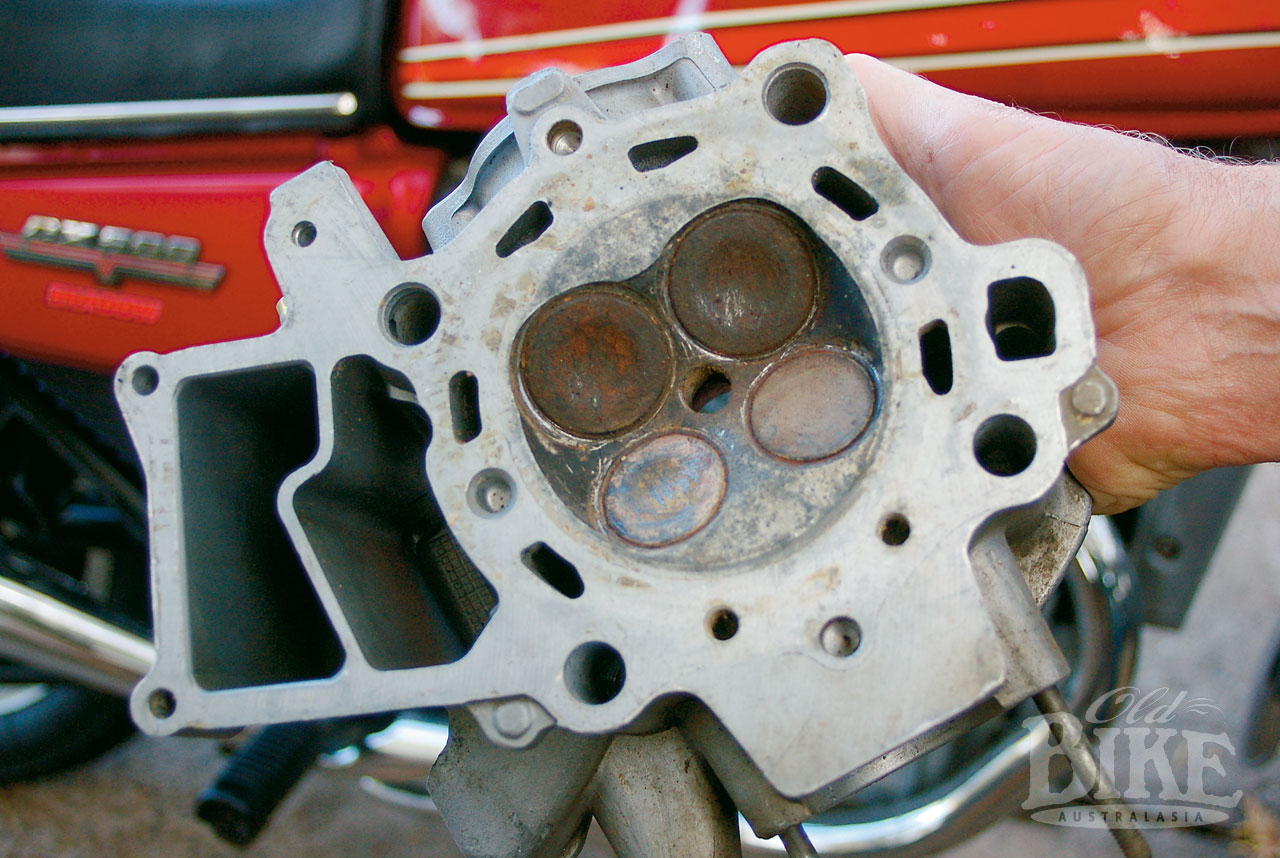
PERFORMANCE
The CX500 was heavy for a 500 but light enough for a 50bhp tourer. All that had to be done was for the rider to take on the mind set of reaching into the gearbox to find the high revs. Nothing less than full noise could product top performance.
This was no low rev tourer. At 100kph the tacho sat at over 5000 and no other rear end ratio was available to raise the overall gearing as Honda only made a 3.09:1 drive ratio..
This engine was so short stroke its bore could be likened to a 250 twin, never mind a 500 twin. The CX was designed to rev and do so for long periods. Forget what other tourers wanted to do on the highway, this shining all polished alloy v-twin could be spun as fast as its owner cared with no trouble.
On the road, like all twins there is no real power below 3000 rpm where the motor begins to get happy and start pulling. Once 4500 is reached the 36mm CV carbs, cam timing, 4 valve heads and short stroke all start working together and the CX spins out the power. It shoots straight for the red line at 9700.
An ace card which is totally appreciated by all who own them is the advanced cylinder heads. These not only have top valve seats to run unleaded but the generous squish built into the combustion chambers which allow a compression of no less than 10:1 to run happily on only 92 octane cheap fuel.
And when discussing performance, the Turbo version must be mentioned. Yes it went like a jet but like so many turbos the whoosh came with a lag and the peakiness was always frustrating. Few liked this complex and heavy bike.

PROBLEMS, PROBLEMS, PROBLEMS.
For such a unique design, the CX500 can be described as relatively trouble-free. In fact, apart from the fragile cam tension arrangement in the very first model, they all went and went with just the minimum of servicing. (Note: those early fixes were all marked by 3 dots next to the engine number to show a Honda dealer had fitted the upgrade kit.)
If an owner suffered a flat battery, the magneto type CDI allowed the bike to be push started and the twin CV carbs always worked cleanly hot or cold.
The twin front discs were thin from the start, so long hard riding forced regular replacements. But the later twin spot callipers gave trouble because they allowed dirt into an exposed piston which caused sticking brakes. That 1982 model also had the auto cam chain tensioner that was very much out of sight and out of mind which meant owners didn’t check the cam chain tension that frequently could be out and so the device had to be replaced very 50,000 or a serious breakage could result.
Higher mileage bikes do need the engine removed for what is known as the CX Triple Bypass. This means replacing the cam chain tensioner, the water pump seal and the stator replaced with a rewound one (new units are too hard to find). And long-in-the-tooth bikes must always be checked for internal corrosion where owners have topped up the fluid with plain water which inevitably attacks the alloy. Fortunately the radiators on these bikes were not made of modern day plastic and tin aluminium but good copper and brass so are easily repaired.
But the 500 problems sink into insignificance compared to what soon emerged on the 650s. These bike wore the top ends very quickly and now replacement parts are next to non-existent. Those unique 7mm valve adjusters are no longer available and the camshafts are also long gone. Owners are forced to expensively convert and adapt CX500 assemblies for the larger bikes to get back on the road.
The very rare VT500 had clutch troubles. Honda got that one wrong.
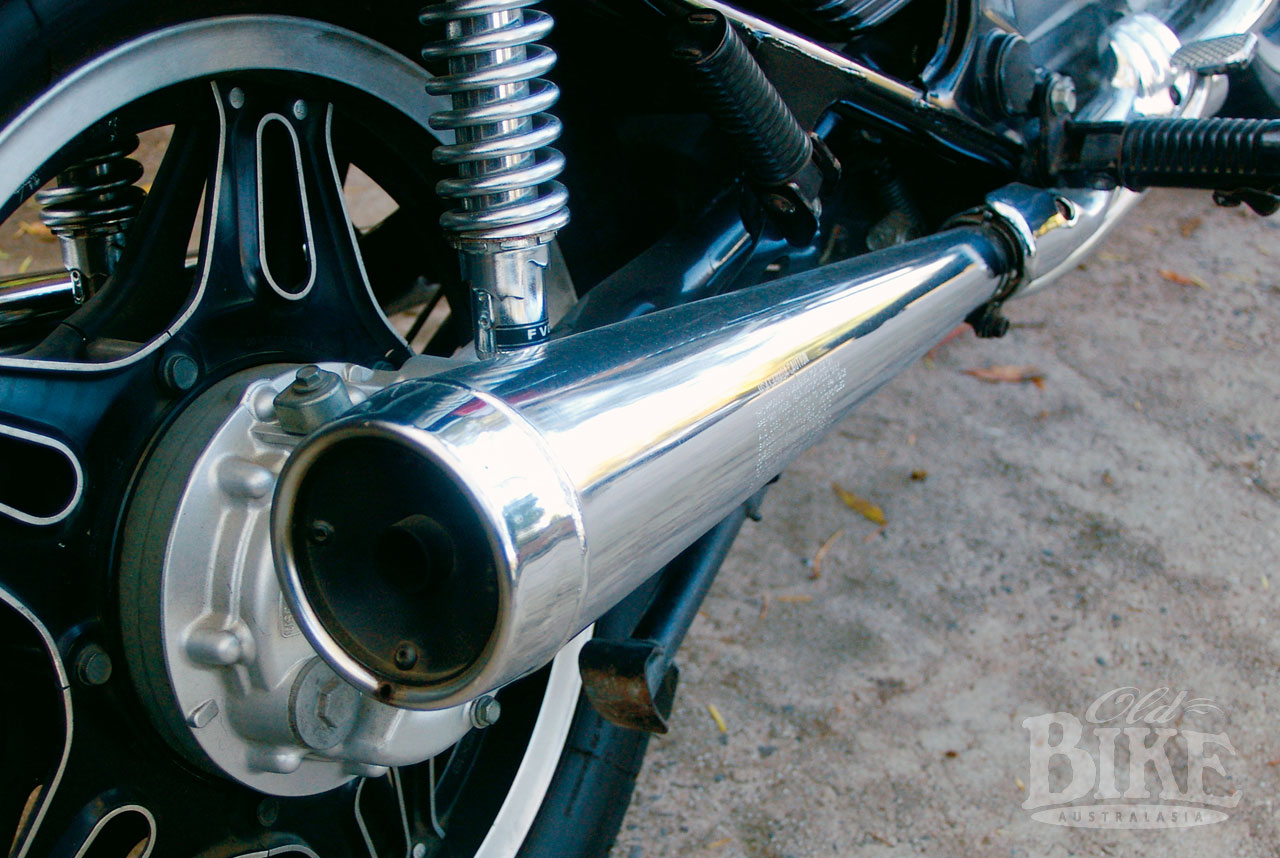
WHO WENT RACING
Right back when it was all new, Honda really did think about putting one in the then popular production racing events. They gave a stock bike to the top proddie competitor, Joe Eastmure, but after only one track session he reported it had only basic circuit performance and the ground clearance was far too restrictive for serious scratching. Elsewhere around the world, much the same happened. This was a tourer. Even in New Zealand only a few made it to the tracks.
TODAY’S HISTORIC RACING
Despite history being against them, a couple do get around in the Forgotten Era class. Trevor Lusby in NSW is one and his had proven surprisingly competitive with many midfield finishes. He has a bigger capacity, shaved heads and bigger carbs to go with the wilder cam.
WHAT MODIFCATIONS ARE VITAL
For owners of early models, the 33mm forks can flex too much with modern rubber so a fork brace should be considered. Or an upgrade to the later thicker forks. 650s had fork braces as stock equipment. Better rear units, like Konis, were always a popular improvement. Good tyres are vital on the thin 30 year old wheels. Many prefer Metzeler. Little can be realistically done to the engine as it is already a screamer. Don’t bother going any further than less restrictive mufflers. Don’t stuff around with the wheels. Those Comstar things are okay and their rivets rarely even loosen. They aren’t user-friendly and are very brittle. So bent ones must be thrown away.
PARTS TODAY
The big problem is valve gear bits for 650s. Even eBay doesn’t seem to carry them any more. 650s can be trouble. For the good old CX500, the bike is realistic for day-to-day riding as well as for classic use. Just about everything is available. The only difficulties lately have been with new indicator lenses and master cylinders.
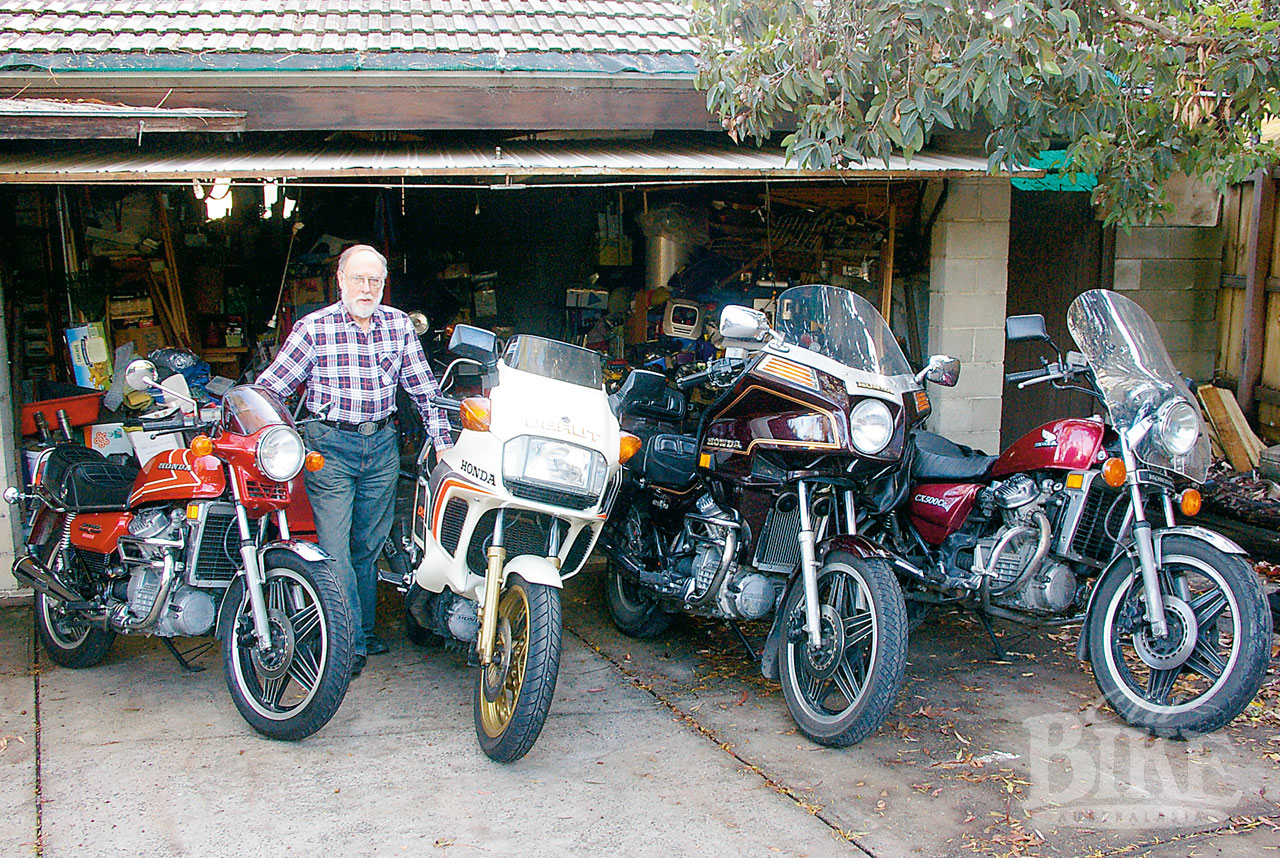
DOCTOR DON – THE CX FRIEND
Every CX500 enthusiast knows all about the booming Australian user group on the net. The bulletin board, where riders discuss all manner of problems is so popular that many internationals use it. (Go to www.australiancx.asn.au) The main stay of this is “Doctor Don” who lives in Melbourne’s eastern suburbs. Since retiring over a decade ago, Don Seedsman has been a dedicated CX500 enthusiast and part-time fixer/parts stockist. He is THE person to know for anyone wanting to keep their v-twin going. A more genuine CX enthusiast would be hard to find – anywhere. Not only does he have an incredible working knowledge of how these bikes best function, but he also has parts and knows what can be adapted to what. His personal line-up of machines include a Cruiser, Sport and Turbo. Shortly after we photographed him with his collection outside his home workshop, he left for a 3 month bike tour of the US. Keep winding it on, master of the CX500s.
